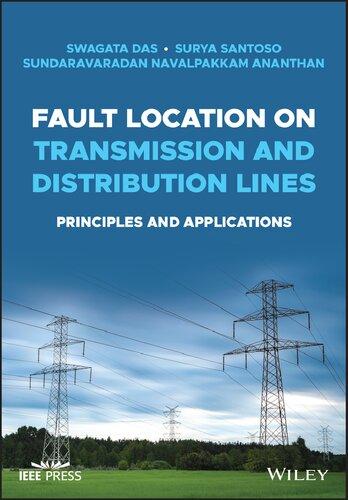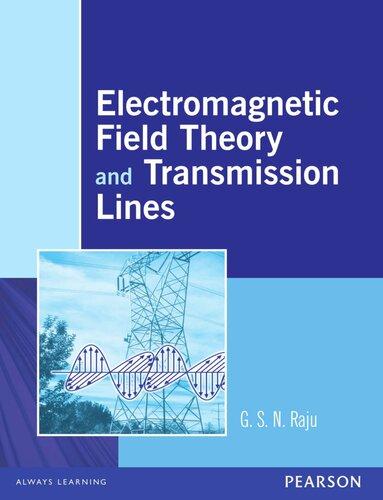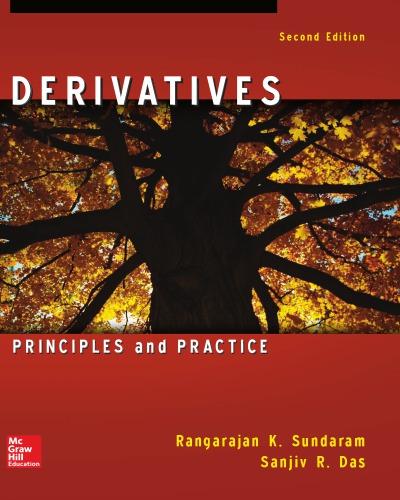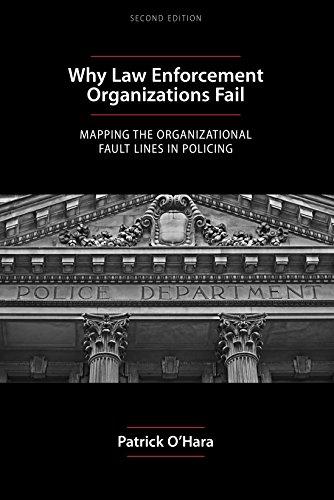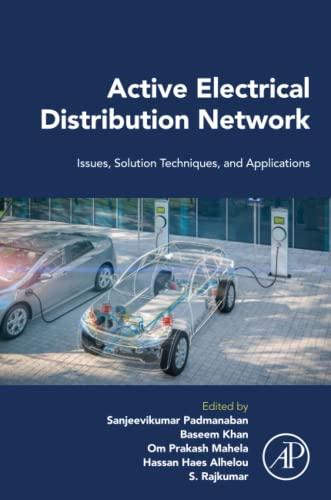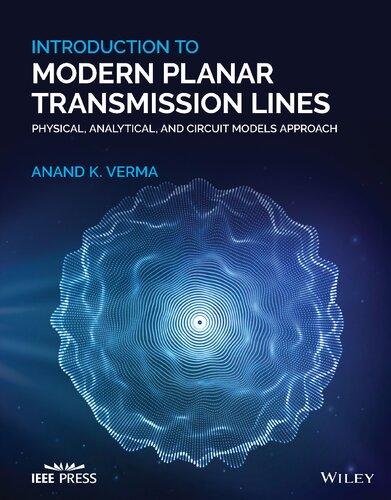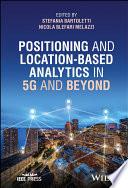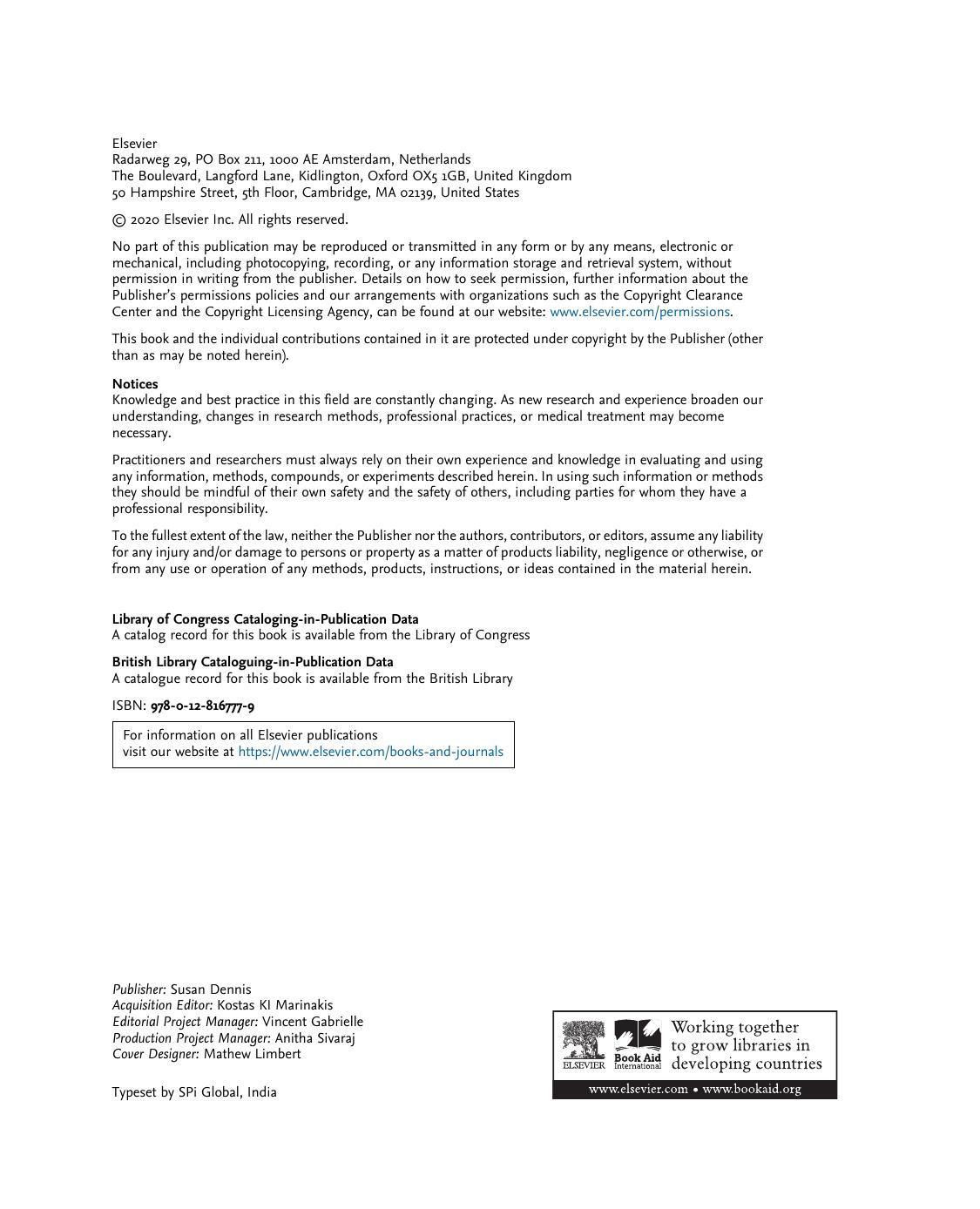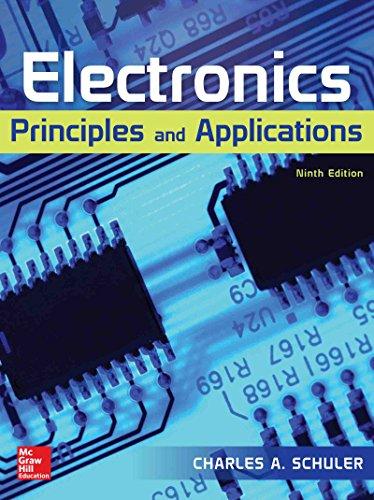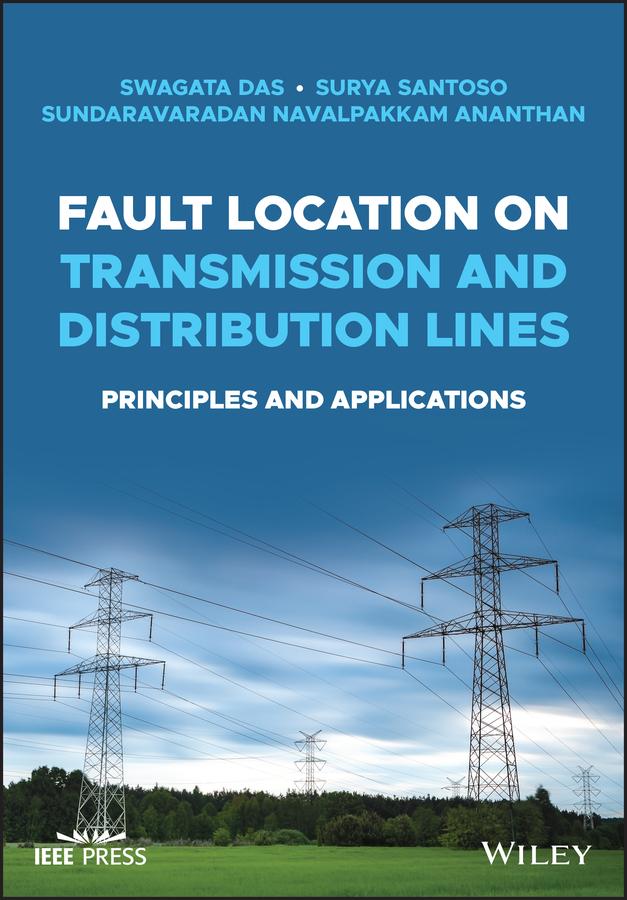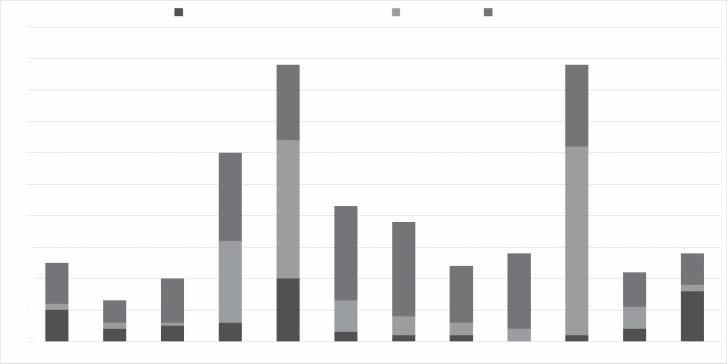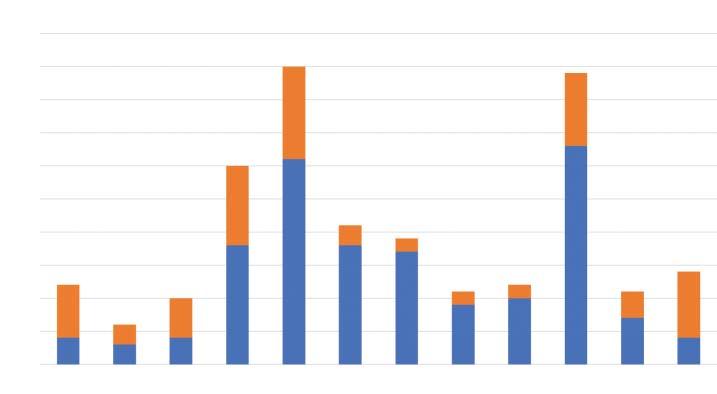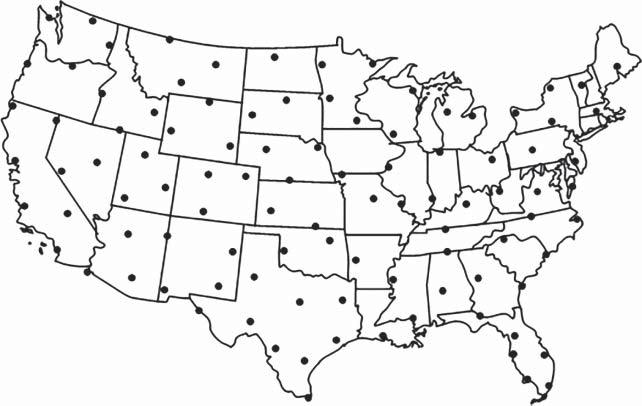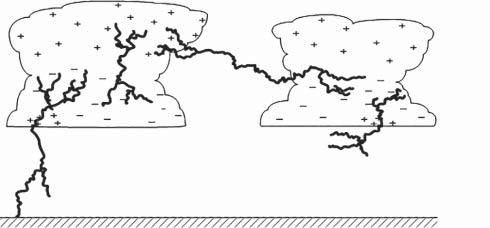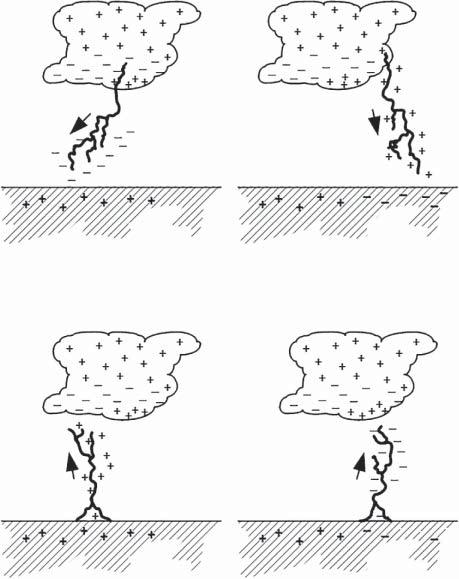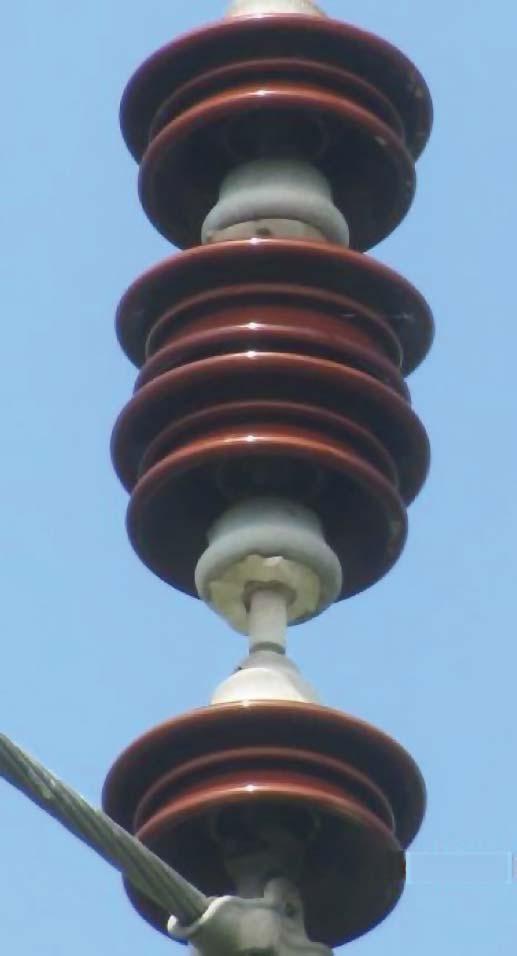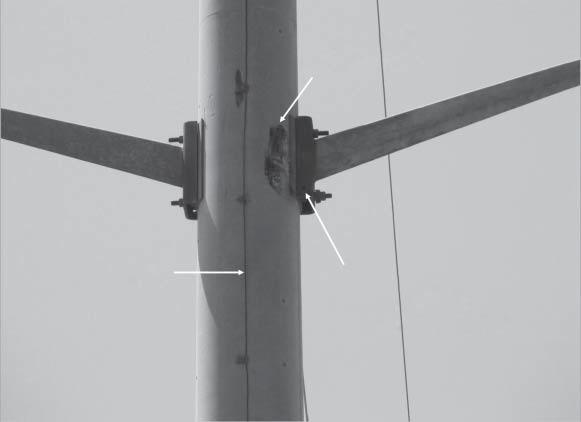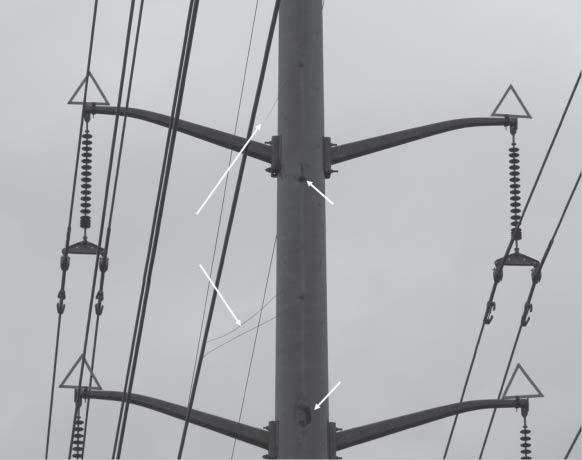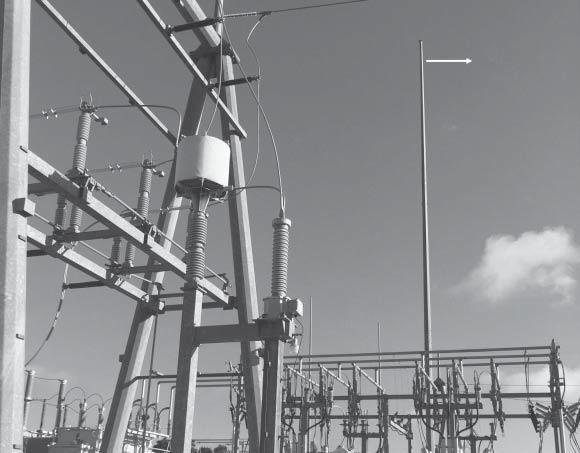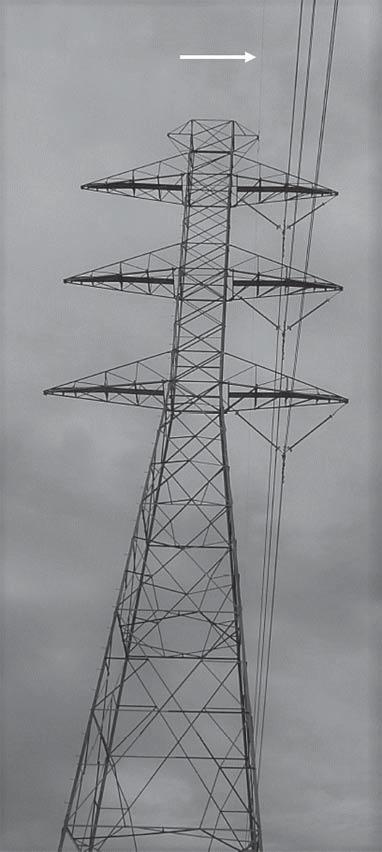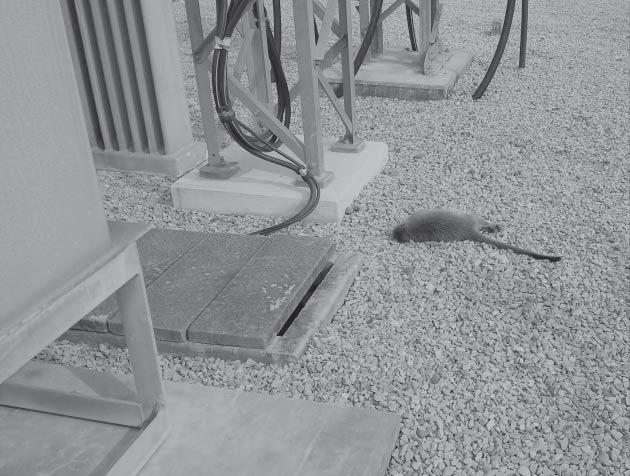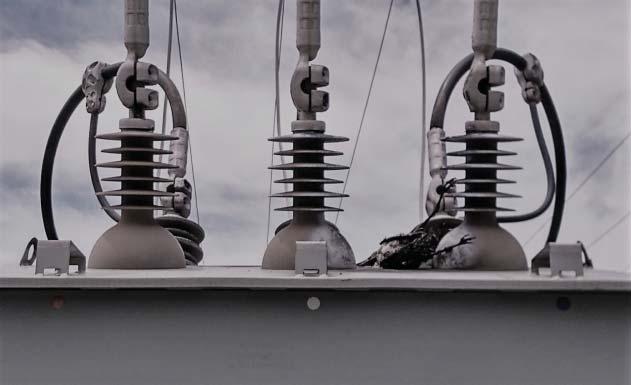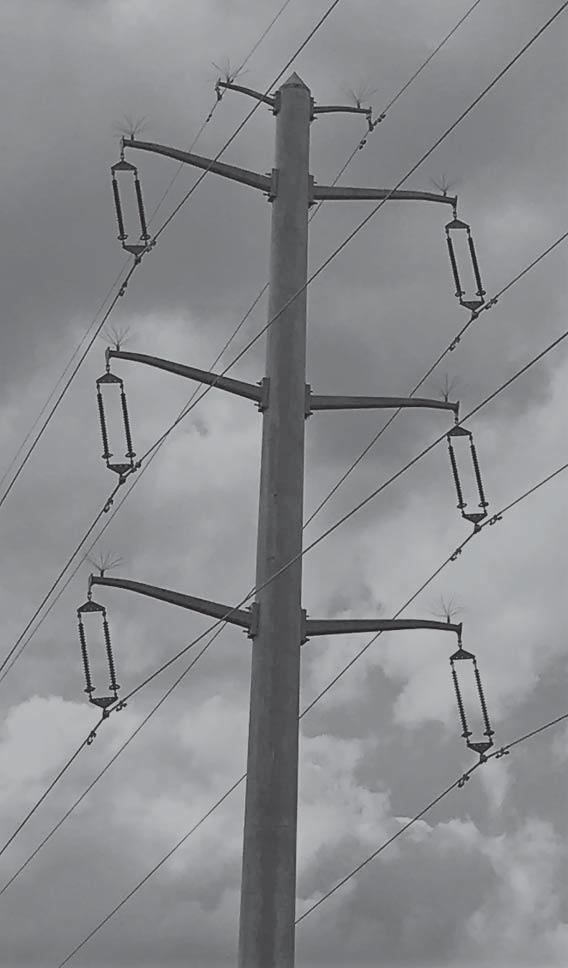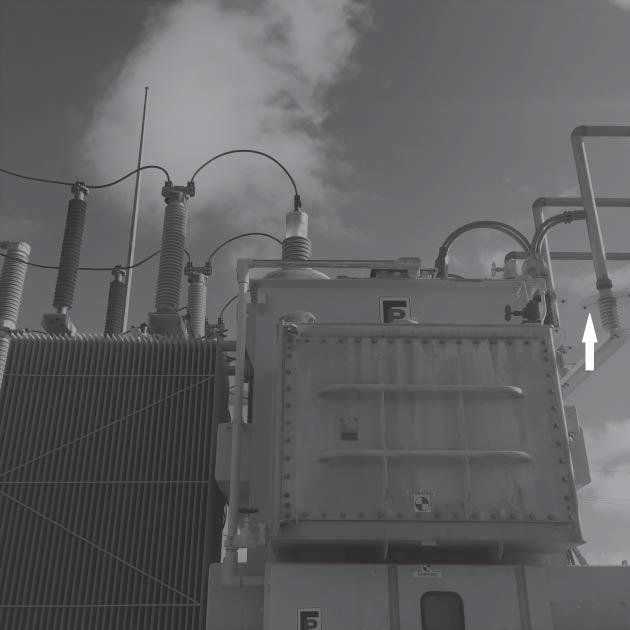Fault Location on Transmission and Distribution Lines: Principles and Applications Swagata Das
Visit to download the full and correct content document: https://ebookmass.com/product/fault-location-on-transmission-and-distribution-lines-p rinciples-and-applications-swagata-das/
More products digital (pdf, epub, mobi) instant download maybe you interests ...
Circuit Theory and Transmission Lines 2nd Edition
Ravish R. Singh
https://ebookmass.com/product/circuit-theory-and-transmissionlines-2nd-edition-ravish-r-singh/
Electromagnetic Field Theory and Transmission Lines G.
S. N. Raju
https://ebookmass.com/product/electromagnetic-field-theory-andtransmission-lines-g-s-n-raju/
Derivatives principles and practice 2. ed Edition Das
https://ebookmass.com/product/derivatives-principles-andpractice-2-ed-edition-das/
Why Law Enforcement Organizations Fail: Mapping the Organizational Fault Lines in Policing, Second Edition
https://ebookmass.com/product/why-law-enforcement-organizationsfail-mapping-the-organizational-fault-lines-in-policing-secondedition/
Active Electrical Distribution Network: Issues, Solution Techniques, and Applications Sanjeevikumar Padmanaban
https://ebookmass.com/product/active-electrical-distributionnetwork-issues-solution-techniques-and-applicationssanjeevikumar-padmanaban/
Introduction To Modern Planar Transmission Lines: Physical, Analytical, and Circuit Models Approach (Wiley - IEEE) 1st Edition Anand K. Verma
https://ebookmass.com/product/introduction-to-modern-planartransmission-lines-physical-analytical-and-circuit-modelsapproach-wiley-ieee-1st-edition-anand-k-verma/
Positioning and Location-Based Analytics in 5G and Beyond Stefania Bartoletti
https://ebookmass.com/product/positioning-and-location-basedanalytics-in-5g-and-beyond-stefania-bartoletti/
Current Trends and Future Developments on (Bio-)
Membranes: Reverse and Forward Osmosis Principles, Applications, Advances Angelo Basile
https://ebookmass.com/product/current-trends-and-futuredevelopments-on-bio-membranes-reverse-and-forward-osmosisprinciples-applications-advances-angelo-basile/
Electronics: Principles and Applications – Ebook PDF Version
https://ebookmass.com/product/electronics-principles-andapplications-ebook-pdf-version/
FaultLocationonTransmissionandDistributionLines
FaultLocationonTransmissionandDistribution Lines
PrinciplesandApplications
SwagataDas
SuryaSantoso
SundaravaradanN.Ananthan
Thiseditionfirstpublished2022
©2022JohnWiley&SonsLtd
Allrightsreserved.Nopartofthispublicationmaybereproduced,storedinaretrievalsystem,or transmitted,inanyformorbyanymeans,electronic,mechanical,photocopying,recordingorotherwise, exceptaspermittedbylaw.Adviceonhowtoobtainpermissiontoreusematerialfromthistitleisavailable athttp://www.wiley.com/go/permissions.
TherightofSwagataDas,SuryaSantoso,andSundaravaradanN.Ananthantobeidentifiedastheauthors ofthisworkhasbeenassertedinaccordancewithlaw.
RegisteredOffices
JohnWiley&Sons,Inc.,111RiverStreet,Hoboken,NJ07030,USA
JohnWiley&Sons,Ltd,TheAtrium,SouthernGate,Chichester,WestSussex,PO198SQ,UK
EditorialOffice
TheAtrium,SouthernGate,Chichester,WestSussex,PO198SQ,UK
Fordetailsofourglobaleditorialoffices,customerservices,andmoreinformationaboutWileyproducts visitusatwww.wiley.com.
Wileyalsopublishesitsbooksinavarietyofelectronicformatsandbyprint-on-demand.Somecontentthat appearsinstandardprintversionsofthisbookmaynotbeavailableinotherformats.
LimitofLiability/DisclaimerofWarranty
Whilethepublisherandauthorshaveusedtheirbesteffortsinpreparingthiswork,theymakeno representationsorwarrantieswithrespecttotheaccuracyorcompletenessofthecontentsofthisworkand specificallydisclaimallwarranties,includingwithoutlimitationanyimpliedwarrantiesofmerchantability orfitnessforaparticularpurpose.Nowarrantymaybecreatedorextendedbysalesrepresentatives,written salesmaterialsorpromotionalstatementsforthiswork.Thefactthatanorganization,website,orproduct isreferredtointhisworkasacitationand/orpotentialsourceoffurtherinformationdoesnotmeanthat thepublisherandauthorsendorsetheinformationorservicestheorganization,website,orproductmay provideorrecommendationsitmaymake.Thisworkissoldwiththeunderstandingthatthepublisheris notengagedinrenderingprofessionalservices.Theadviceandstrategiescontainedhereinmaynotbe suitableforyoursituation.Youshouldconsultwithaspecialistwhereappropriate.Further,readersshould beawarethatwebsiteslistedinthisworkmayhavechangedordisappearedbetweenwhenthisworkwas writtenandwhenitisread.Neitherthepublishernorauthorsshallbeliableforanylossofprofitorany othercommercialdamages,includingbutnotlimitedtospecial,incidental,consequential,orother damages.
LibraryofCongressCataloging-in-PublicationData
Names:Das,Swagata,author.|Santoso,Surya,author.|Ananthan, SundaravaradanN,author.
Title:Faultlocationontransmissionanddistributionlines:principles andapplications/SwagataDas,SuryaSantoso,Sundaravaradan N.Ananthan.
Description:Hoboken,NJ:Wiley,2022.|Includesbibliographical referencesandindex.
Identifiers:LCCN2021030668(print)|LCCN2021030669(ebook)|ISBN 9781119121466(cloth)|ISBN9781119121473(adobepdf)|ISBN 9781119121497(epub)
Subjects:LCSH:Electricfaultlocation.|Powertransmission.
Classification:LCCTK3226.D31732022(print)|LCCTK3226(ebook)|DDC 621.319/2–dc23
LCrecordavailableathttps://lccn.loc.gov/2021030668
LCebookrecordavailableathttps://lccn.loc.gov/2021030669
CoverDesign:Wiley
CoverImage:©REDPIXEL.PL/Shutterstock
Setin9.5/12.5ptSTIXTwoTextbyStraive,Chennai,India
10987654321
Preface ix AbouttheCompanionWebsite xi
1Introduction 1
1.1PowerSystemFaults 1
1.2WhatCausesShuntFaults? 4
1.3AimandImportanceofFaultLocation 16
1.4TypesofFault-LocatingAlgorithms 19
1.5HowareFault-LocatingAlgorithmsImplemented? 21
1.6EvaluationofFault-LocatingAlgorithms 25
1.7TheBestFault-LocatingAlgorithm 26
1.8Summary 26
2SymmetricalComponents 27
2.1Phasors 28
2.2TheoryofSymmetricalComponents 29
2.3InterconnectingSequenceNetworks 31
2.4SequenceImpedancesofThree-PhaseLines 36
2.5ExerciseProblems 41
2.6Summary 46
3FaultLocationonTransmissionLines 49
3.1One-EndedImpedance-BasedFaultLocationAlgorithms 49
3.1.1SimpleReactanceMethod 52
3.1.2TakagiMethod 54
3.1.3ModifiedTakagiMethod 56
3.1.4CurrentDistributionFactorMethod 57
3.2Two-EndedImpedance-BasedFaultLocationAlgorithms 58
3.2.1SynchronizedMethod 59
3.2.2UnsynchronizedMethod 60
3.2.3UnsynchronizedNegative-SequenceMethod 61
3.2.4SynchronizedLineCurrentDifferentialMethod 62
3.3Three-EndedImpedance-BasedFaultLocationAlgorithms 62
3.3.1SynchronizedMethod 63
3.3.2UnsynchronizedMethod 65
3.3.3UnsynchronizedNegative-SequenceMethod 66
3.3.4SynchronizedLineCurrentDifferentialMethod 67
3.4Traveling-WaveFaultLocationAlgorithms 68
3.4.1Single-EndedTravelingWaveMethod 69
3.4.2Double-EndedTraveling-WaveMethod 71
3.4.3ErrorSources 71
3.5ExerciseProblems 77
3.6Summary 93
4ErrorSourcesinImpedance-BasedFaultLocation 95
4.1PowerSystemModel 95
4.2InputDataErrors 96
4.2.1DCOffset 97
4.2.2CTSaturation 99
4.2.3AgingCCVTs 101
4.2.4Open-DeltaVTs 101
4.2.5InaccurateLineLength 104
4.2.6UntransposedLines 104
4.2.7VariationinEarthResistivity 106
4.2.8Non-HomogeneousLines 107
4.2.9IncorrectFaultTypeSelection 109
4.3ApplicationErrors 109
4.3.1Load 109
4.3.2Non-HomogeneousSystem 111
4.3.3Zero-SequenceMutualCoupling 111
4.3.4SeriesCompensation 118
4.3.5Three-TerminalLines 119
4.3.6RadialTap 120
4.3.7EvolvingFaults 121
4.4ExerciseProblems 122
4.5Summary 126
5FaultLocationonOverheadDistributionFeeders 129
5.1Impedance-BasedMethods 134
5.1.1LoopReactanceMethod 135
5.1.2SimpleReactanceMethod 140
5.1.3TakagiMethod 140
5.1.4ModifiedTakagiMethod 141
5.1.5Girgisetal.Method 141
5.1.6Santosoetal.Method 143
5.1.7Novoseletal.Method 144
5.2ChallengeswithDistributionFaultLocation 146
5.2.1Load 146
5.2.2Non-HomogeneousLines 146
5.2.3InaccurateEarthResistivity 149
5.2.4MultipleLaterals 150
5.2.5BestDataforFaultLocation:FeederorSubstationRelays 151
5.2.6DistributedGeneration 152
5.2.7HighImpedanceFaults 156
5.2.8CTSaturation 156
5.2.9Grounding 156
5.2.10ShortDurationFaults 157
5.2.11MissingVoltage 157
5.3ExerciseProblems 158
5.4Summary 177
6DistributionFaultLocationWithCurrentOnly 179
6.1CurrentPhasorsOnlyMethod 179
6.2CurrentMagnitudeOnlyMethod 184
6.3Short-CircuitFaultCurrentProfileMethod 191
6.4ExerciseProblems 193
6.5Summary 208
7SystemandOperationalBenefitsofFaultLocation 209
7.1VerifyRelayOperation 210
7.2DiscoverErroneousRelaySettings 211
7.3DetectInstrumentTransformerInstallationErrors 217
7.4ValidateZero-SequenceLineImpedance 222
7.5CalculateFaultResistance 225
7.6ProveShort-CircuitModel 226
7.7AdaptAutoreclosinginHybridLines 227
7.8DetecttheOccurrenceofMultipleFaults 228
7.9IdentifyImpendingFailuresandTakeCorrectiveAction 232
7.10ExerciseProblems 232
7.11Summary 239
AFaultLocationSuiteinMATLAB 241
A.1UnderstandingtheFaultLocationScript 241
References 261 Index 269
Preface
Thepurposeofthepowersystemistoistodeliverelectricalpowerfromgeneratorstoloads throughtransmissionanddistributionlines.Today,electricalpowerisanecessityofeverydaylifeandisexpectedtobepresentwheneverweneedit.Unfortunately,thisexpected servicemaynotalwaysbeavailable,particularlywhenthereisashort-circuitfaultonthe powersystem.Theoutagetimewillequalthetimetakenbytheutilitytofindthefaultplus thetimetakentomakerepairs.
Fault-locatingalgorithmscanshortenthetimetakentofindfaultsontransmissionand distributionlines.Theselinescoverlongdistances.Manuallypatrollingthelinetolocate thefaultcanbequitetimeconsuming.Roughterrainsandbadweathercanmakeitthat muchhardertolocatethefault.Knowingwheretolookforthefaultsavessignificanttime andexpediteservicerepairandrestoration.
Today,therearemanyfault-locatingalgorithmstochoosefrom.Whileallalgorithmshave thesameobjective,whichistofindthefaultwiththehighestaccuracy,eachalgorithm makesdifferentassumptionsandusesdifferentdatatoarriveatthisresult.Whatisthe bestfault-locatingalgorithm?Thecorrectansweristhatitdepends.Itdependsonthedata availableforfaultlocation,thesystemtowhichthealgorithmwillbeappliedto,andthe natureofthefault.
Thepurposeofthisbookistoexplainhowthedifferentfault-locatingalgorithmswork, identifywhatdatatheyneed,anddiscussthesourcesoferror.Thisinformationcanhelp thereadermakeaninformeddecisionaboutwhatisthebestfault-locatingalgorithmfor theirsystem.Severalreal-worldexamplesarepresentedthatshowhowtoapplythesealgorithmstofaulteventdataandsolveforthefaultlocation.Thebookalsocoverstheadditional benefitsoffaultlocationthatcanhelpimprovepowersystemperformanceandreliability.
Wehopethatpracticingengineersandstudentswillfindthisbookhelpful.Pleasefeel freetoreachouttousifyouhaveanycommentsforimprovementorfindanyerrors.
Finally,wewouldliketosincerelythankElectricPowerResearchInstituteforgivingus faulteventdatausedinthisbook.
29October2021
SwagataDas SanAntonio,Texas
SuryaSantoso Austin,Texas
SundaravaradanN.Ananthan Houston,Texas
AbouttheCompanionWebsite
Thisbookisaccompaniedbyacompanionwebsite: www.wiley.com/go/das/faultlocation
Thewebsiteincludesthefollowingmaterials: ● FaultLocationSuiteinMATLAB
Introduction
Thepowersystemisacomplexnetworkofgenerators,transformers,transmissionlines, distributionfeeders,loads,andotherelectricalcomponents.Thepurposeofthisnetworkis todeliverelectricalpowerfromgeneratorstoloadsthroughtransmissionlinesanddistributionfeeders.Today,electricalpowerisanecessityofeverydaylifeandisexpectedtobe presentwheneverweflipthelightswitch,chargeourphones,andturnonothergadgets. Unfortunately,thisexpectedservicemaynotalwaysbeavailable,particularlywhenthere isafaultonthepowersystem.
Faultsareabnormalconditionsonthepowersystemthatdisruptthenormalflowofelectricalpowerfromgeneratorstoloads.Lightning,animalcontact,treecontact,andadverse weathersuchasstrongwindsandwinterstormsaresomeofthemajorreasonsforpower systemfaults.Utilitiestakemanypreventivestepssuchasinstallingshieldwiresandsurge arresterstodiverttheenergyoflightningstrikes,puttingupanimalguards,andtrimming treesatperiodicintervalstominimizethechancesofafault.Inspiteofallthesemeasures, faultsareinevitableonthepowersystem.Sowhentheyoccur,alleffortsmustbemadeto locatethefaultasquicklyaspossible,makerepairs,andrestorepower.Thisiswhyfault locationissoimportantandcriticaltoimprovingpowersystemreliability.
Webeginthischapterbyexplainingthetypesoffaultsthatcanoccuronthepowersystem andtheirrootcause.Wethenmoveourfocustofault-locatingalgorithms.Wediscusstheir aimandimportance,theirprinciples,theirimplementationinthefield,andtheirevaluation criteria.Finally,wediscusshowtochoosethebestfault-locatingalgorithmfromamongthe manyalgorithmsthathavebeenproposedintheliterature.
1.1PowerSystemFaults
Faultsareabnormalconditionsonthepowersystemthatcausevoltage,current,frequency, andpowertodeviatefromtheirnominalvalues.Protectiverelaysaretypicallyusedtodetect andisolatethesefaultsasquicklyaspossibletoreturnthepowersystembacktonormal operatingconditions.TheInstituteofElectricalandElectronicsEngineers(IEEE)defines aprotectiverelayas“adevicewhosefunctionistodetectdefectivelinesorapparatusor otherpowersystemconditionsofanabnormalordangerousnatureandtoinitiateappropriatecontrolaction”[1].Protectiverelaysusecurrenttransformers(CTs)andpotential
FaultLocationonTransmissionandDistributionLines:PrinciplesandApplications,FirstEdition. SwagataDas,SuryaSantoso,andSundaravaradanN.Ananthan. ©2022JohnWiley&SonsLtd.Published2022byJohnWiley&SonsLtd. Companionwebsite:www.wiley.com/go/das/faultlocation
transformers(PTs)tomonitorthestateofthepowersystem.Whenafaultisdetected,they sendatripcommandtocircuitbreakers,whichthenopentoisolatethefault.Inlow-voltage distributionsystems,fusesareoftenusedinsteadofprotectiverelaysandcircuitbreakers todetectandisolatefaultsthatcreateanovercurrentcondition.AfuseisdefinedbyIEEE as“anovercurrentprotectivedevicewithacircuit-openingfusiblepartthatisheatedand severedbythepassageoftheovercurrentthroughit.”
Faultsexperiencedbythepowersystemcanbeoftwotypes,seriesfaultsandshunt faults.Seriesfaultsusuallyoccurwhenthereisanopencircuitononeortwophase conductorsduringloadconditions.Becausetheopencircuitoccursinserieswiththe phaseconductor,thesefaultsareknownasseriesfaults.Seriesfaultscanbecausedby brokenjumpersorwhenallthreepolesofacircuitbreakerpoleareunabletocloseduring amanualoranautomaticcloseoperation.Theycanalsobecausedbyablownfuse.For example,Fig.1.1showsadistributiontransformerbeingprotectedbyhigh-sidefuses. Ifoneortwohigh-sidefuseblowsduetoanovercurrentcondition,itwillresultinaseries fault.Duringaseriesfault,thecurrentinthefaultedphasedecreasesduetolossinload whilethehealthyphasecontinuestocarryloadcurrent.Thevoltageandfrequencyof thefaultedphasealsoincreaseascomparedtothehealthyphase.Whileseriesfaultsdo notresultinhighmagnitudecurrentstoflowinthefaultedphases,theymakethepower systemunbalanced,causingunbalancedcurrentstoflowinthepowersystem.Theheat generatedbytheunbalancedcurrentscandamagetransformersandmotors.References [2–4]explainhowprotectiverelayscanbesetuptodetectandisolateseriesfaults.
Shuntfaultsoccurwhenthereisashuntconnectionbetweenoneormorephaseconductorstothegroundorbetweeneachother.Theshuntconnectioncreatesashort-circuit conditionallowingcurrenttoflowthroughanalternate,lowerimpedancepath.Thelower impedancecausesthecurrentinthefaultedphasetodramaticallyincreasewhilethevoltage ofthefaultedphasedecreases.Becauseshuntfaultsaremorecommonandmoredamaging thanseriesfaults,thisbookwillfocusonlocatingshuntfaults.
Therearefourtypesofshuntfaults(seeFig.1.2).Singleline-to-groundfaults(also referredtoassinglephase-to-groundfaults)occurwhenoneofthethreephaseconductors makescontactwiththegroundwireorthegroundedpieceofanequipment.Seventyto eightypercentofallfaultsaresingleline-to-groundfaults,makingthisthemostcommon faulttype[5].Line-to-linefaults(alsoreferredtoasphase-to-phasefaults)occurwhen twophaseconductorsmakecontactwitheachother.Doubleline-to-groundfaults(also referredtoasdoublephase-to-groundfaults)occurwhentwophaseconductorsmake contactwitheachotherandthegroundwireorthegroundedpieceofanequipment. Three-phasefaultsoccurwhenallthreephaseconductorsmakecontactwitheachother,
Figure1.1 Adistributiondelta/wye-groundedtransformerbeingprotectedbyhigh-sidefuses. Ablownfusewillresultinaseriesfault.
Figure1.2 Thefourtypesofshuntfaults.
withorwithoutgroundconnection.Thisfaulttypeisquiterareandismostoftenthe resultofhumanerrors.Three-phasefaultsarereferredtoasbalancedfaultsasthefault involvesallthreephases.Theotherfaulttypesinvolveoneortwophasesandmakethe powersystemunbalanced.Asaresult,theyarereferredtoasunbalancedfaults.
Shuntfaultscanbepermanent(leadingtosustainedoutages)ortemporary(leadingto momentaryoutages).Permanentfaultsoccurwhenthereispermanentdamagetoapower systemequipmentandrequirelinecrewtomakerepairsbeforereenergization.Temporary faultsoccurduetolightning,animalcontact,flyingdebris,andothertemporarysources offault.Suchfaultsclearoutontheirownafterthefaultarcgetsextinguished.Whenthe arcgetsextinguishedbyitselfwithouttheoperationofanyprotectivedevice,thefaultis referredtoasaself-clearingfault.Thesefaultsgenerallyoccurwheninsulationbreaksdown nearthevoltagepeakbutclearoutontheirownwithinaquartercycle.Thefrequencyof self-clearingfaultsincreaseovertimeandeventuallyleadtopermanentfaults[6].Faultarcs canalsogetextinguishedbytheoperationofarelayandcircuitbreaker.Afterashortopen timedelay,whichallowsthearctogetextinguished,therelaysendsareclosecommand tothecircuitbreakertoresumenormaloperation.Mostfaultsonundergroundcablesare permanentfaults.Incontrast,mostfaultsonoverheadsystemsaretemporaryfaults[7].
Shuntfaultscancausesignificantthermaldamagetopowersystemequipment.Thermal energyduringafaultisproportionaltothemagnitudeanddurationofthefaultcurrent. Ifthisthermalenergyexceedsthethermallimitofpowertransformers,motors,andother powersystemequipment,theygetdamagedduetoinsulationfailure.Inaddition,strong mechanicalforcesdevelopedbythehighmagnitudecurrentcanbreakandphysicallydamagepowersystemequipment.Infact,[8]reportsthattransformers,acriticalassetinthe substation,mostoftenfailduetomechanicalandthermalstresscausedbyexternalthrough faults.Shuntfaultsarealsoasafetyconcern.Sparksfromfaultscanstartforestfires.Faults insideoil-filledtransformerscanleadtofiresandexplosions,creatingdangerousworking conditionsforpersonnelinsidethesubstation.Arcflasheventsinaswitchgearcanleadto dangerousandpossiblyfatalconditionsduetoheat,ultravioletradiation,shrapnel,noise, andpressurefromtheblast[9].Shuntfaultsifnotclearedbeforethecriticalclearingtime canmakethepowersystemunstable,leadingtocascadingoutages[10].Finally,shuntfaults cancausevoltagesagsorswellsonotherhealthyfeeders.Avoltagesagisdefinedasan eventinwhichthermsvoltagedropstoavaluebetween0.1and0.9perunitforaduration
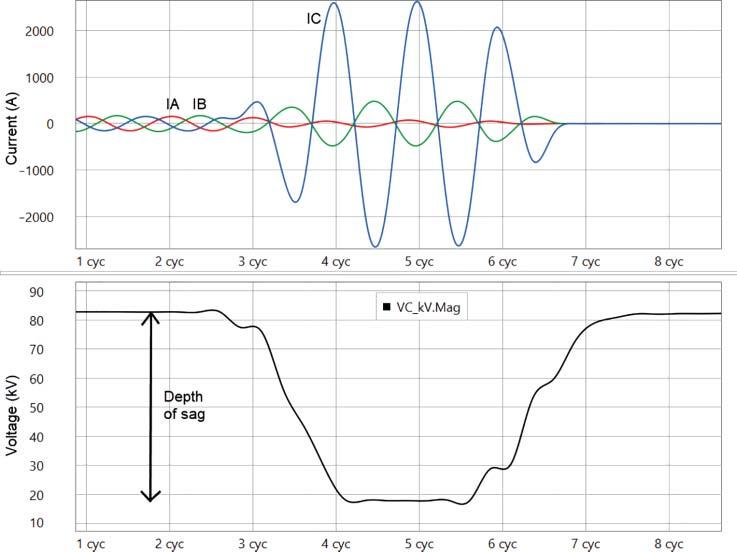
Figure1.3 Voltagesagduetoasingleline-to-groundfaultona138kVline. betweenahalfcycletooneminute.Anexampleofvoltagesagduringasingleline-to-ground faultisshowninFig.1.3.Voltagesagisapowerqualityeventthatcanshutdownsensitive equipmentinindustrialplants,resultinginarevenuelossofseveralmilliondollars.Voltage swellisdefinedasaneventinwhichthermsvoltageincreasestoavaluebetween1.1and 1.8perunitforadurationbetweenahalfcycletooneminute.Thiscanoccurwhensingleline-to-groundfaultsoccuronanungroundedsystem.Voltageoftheunfaultedphases swellsto1.73perunitandstressestheinsulators.Forallthereasonslistedabove,shunt faultsmustbedetectedandisolatedasfastaspossible.Thelatestgenerationofprotective relayscandetectfaultsinasfastas2ms[11].Thebreakertakesanadditionaltwoorthree cyclestoopen.Thefastclearingtimelimitsthedamagetopowersystemequipment,reduces theimpactofthefaultontherestofthepowersystem,andincreasespersonnelsafety.
1.2WhatCausesShuntFaults?
Thissectiondiscussesthemostcommoncausesofshuntfaultsonthepowersystem. Lightning Lightningisamajorcauseofshuntfaultsonthepowersystem.DatacollectedbyTexas ReliabilityEntityshownsummarizedinFig.1.4isacaseinpoint.Youcanseethatlightning
Figure1.4 Shuntfaultson345kVtransmissionlinesinTexasin2015categorizedbyroot cause[18].
MomentaryoutageSustainedoutage JanFebMarAprMayJunJulAugSepOctNovDec
Figure1.5 Acomparisonofthenumberofsustainedandmomentaryoutageson345kV transmissionlinesinTexasin2015[18].
wasresponsibleforalargenumberoffaultson345kVtransmissionlinesinTexasin2015, particularlyduringthemonthsofApril,May,andOctober.Figure1.5showshowmanyof thesameshuntfaultsresultedinsustainedandmomentaryoutages.Duringthemonthsof April,May,andOctober,whenlightningactivityhaddramaticallyincreased,thenumber ofmomentaryoutageswasmuchgreaterthanthenumberofsustainedoutages.Thedata establishesastrongcorrelationbetweenlightningandmomentaryoutages,indicatingthat mostfaultsduetolightningaretemporaryfaults.
Figure1.6 LocationofNLDNsensorstodetectlightning[14].
LightningactivityintheUSismonitoredbytheNationalLightningDetectionNetwork (NLDN).Thisnetwork,ownedandoperatedbyVaisala,hasoverahundredsensorsacross theUSasshowninFig.1.6.Duringalightningstrike,sensorsthatgettriggeredsendthe informationtheycapturedaboutthestrikeviasatellitetoacentrallocationinTucson, Arizona.There,datafromdifferentsensorsarecombinedtoestablishdate,time,peak currentmagnitude,type,andlocationofthelightningstrike[13].Thedataisthenmade availabletotheNationalWeatherServiceandutilitiesthatsubscribetothisservice.These utilitiescanmakeuseofthisinformationtodeterminewhetherlightningwasinthearea whenaparticularfaultoccurredontheirsystemandwhetheritwastherootcauseofthe fault.
Lightningoccurswhenathundercloud(alsoreferredtoasacumulonimbuscloud)developsareasofpositiveandnegativechargesasshowninFig.1.7.Lightningdischargecan occurbetweenthepositivelychargedandthenegativelychargedregionsinsidethecloud andarereferredtoasintracloudlightning.Itcanalsooccurbetweenthepositivelycharged
Lightningdischargescanbeintracloud,cloud-to-cloud(intercloud),cloud-to-air,and cloud-to-ground[14].
Cloud-toCloud
Figure1.7
areaofonethundercloudandthenegativelychargedareaofanotherthundercloudandis referredtoascloud-to-cloudorintercloudlightning.Lightningcanalsooccurbetween athundercloudandair,referredtoasacloud-to-airlightningdischarge,andbetweena thundercloudandtheearth,referredtoasacloud-to-grounddischarge.Cloud-to-ground dischargesconstituteabouttwenty-fivepercentofalllightningdischargesandaretheones responsibleforcreatingshuntfaultsonthepowersystem.
Figure1.8showsfourdifferentwaysbywhichacloud-to-groundlightningstrikecan occur.Adownwardnegativelightningstrikestartswhennegativechargesatthelowerparts ofthecloudstartionizingtheair.Thisresultsinacolumnofnegativecharges,knownasthe leader,movingdowntowardtheground.Astheleaderapproachestheground,itinduces streamersofoppositechargestomoveupfromtheground.Whentheleaderandstreamer makecontactwitheachother,thepathbecomescomplete,acloud-to-groundstrikeoccurs, andahugeamountofnegativechargeistransferredtotheground.Adownwardpositive lightingstrikeoccursthesamewayasthepreviousone,exceptthattheleaderisinitiated bypositivechargesinthecloud.Upwardlightningstrikesoccurwhenleadersareinitiated bytallobjectsonthegroundwithsharpcorners.Whentheleaderreachesthecloud,a cloud-to-groundlightningstrikeoccurs.Whentheleaderispositive,itiscalledupward positivelightning.Whentheleaderisnegative,itiscalledupwardnegativelightning. Outofthefourtypes,downwardnegativecloud-to-groundlightningstrikesaremore common.
Figure1.8 Typesof cloud-to-groundlightning[14].
Figure1.9 Overvoltageduetolightningstrikeona69kVtransmissionlineresultedinaflashover andaphase-to-groundfault.Theinsulatorstringwasfoundtobedamagedwithmultipleceramic disksmissing.(Photo:CourtesyofMr.GenardoCorpuz,LowerColoradoRiverAuthority,USA.)
Acloud-to-groundlightningstrikecancreatefaultswhenitdirectlystrikesaphaseconductorandinjectsahugecurrentsurgeintotheline.Thecurrentsurgeisaccompanied byavoltagesurge.Ifthevoltagesurgeexceedstheinsulatorcriticalflashovervoltage,a flashoverwilloccur,resultinginashuntfault.Lightningcanalsostrikeatowerandcreate faults.Whentheinjectedcurrentsurgetravelsthroughthetowertotheground,avoltage risedevelopsacrossthetowercrossarmduetothesurgeimpedanceofthetowerandthe towerfootingresistance.Ifthevoltageriseislargeenough,aflashoverwilloccurfromthe towertotheconductoracrosstheinsulatorstring.Thisflashover,commonlyreferredto asbackflash,willcreateashuntfault.Figure1.9,Figure1.10,andFigure1.11showthe damagetoutilityassetsduetoflashoverduringlightning.
Toprotectpowersystemequipmentfromlightningatsubstations,lightingmasts(shown inFig.1.12)andlightningarrestersareused.Linearrestersareusedinparallelwithtransmissionlineinsulatorstopreventthevoltagefromincreasingbeyondthelineinsulation level.Toreducethepossibilityofdirectlightningstrikestotransmissionlines,groundwires (shieldwires)areoftenplacedabovethephaseconductors(showninFig.1.13).Shieldwires alsoreducethepossibilityabackflashastheinjectedcurrentisdividedintothreeparts (towerandeachdirectionontheshieldwire).Polegroundisimprovedbydrivingametal rodfurtherdownintotheground.
Animals
Animalssuchasbirds,snakes,monkeys,cats,andsquirrelsarenotoriousforcreatingfaults onthepowersystem.Figure1.14showsamonkeythatdiedaftermakingcontactwith
Phase flashed to ground at this point
Wire that connects arm/bracket to the ground wire has melted
Figure1.10 Anotherexampleofafaultduetolightningstrikeona138kVtransmissionline. TheresultingovervoltagecausedaflashoverandanA-Gfault.Noticethedamagetotheconcrete toweratthepointoftheflashover.Partofthewirethatconnectsthebracket/towerarmtothe groundwirehaseithermeltedorblownaway.(Photo:CourtesyofMr.GenardoCorpuz,LowerColorado RiverAuthority,USA.)
Ground wire
Flashover point of one phase
Flashover point of the other phase
Figure1.11 Similartothepreviousexample,lightningstrucka138kVtransmissionline.PhaseA andphaseCflashedtothegroundwireandcreatedaline-to-linefaultthroughthegroundwire. Noticetheevidenceofdamagetotheconcretetowerwhenoneofthephasesflashedovertothe groundwire.(Photo:CourtesyofMr.GenardoCorpuz,LowerColoradoRiverAuthority,USA.)
Broken ground wire
Lightning mast
Figure1.12 Lightningmastatasubstation.
Figure1.13 Shieldwireonasingle-circuit 345kVtransmissionline.(Photo:Courtesyof Mr.GenardoCorpuz,LowerColoradoRiver Authority,USA.) Shield wire
energizedequipmentinasubstationandcreatingafault.Figure1.15showsthedamage toa22kVbreakerwhenabirdflappeditswings,touchedbothBandCphases,andcreated aBCfault.Birdsbuildnestsontransmissiontowers,ondistributionpoles,andinsubstations.Thesenestscancauseashortcircuitbymakingcontactwithmultipleconductors. Theycanalsoattractotheranimalssuchassnakesandraccoonsthatinturncausefaults. Birddroppingscontaminateinsulatorsandcanresultinaflashover.Woodpeckerscancause structuraldamagetowoodenpoles.Horses,bears,bison,andcattlecanalsodegradethe structuralintegrityofpolesbyrubbingagainstguy-wires,causingthepolestoleanandconductorstosag.Squirrelscanclimbutilitypolesandcreatefaultsbybridgingthegapbetween phaseconductorsandthegroundedequipment.Smallanimalssuchasratsandmicecan chewontheinsulationofundergroundcablesandcreatefaults.Toreducethenumberof
Figure1.14 Amonkeythatmadecontactwithenergizedequipmentinasubstationandcreateda fault.(Photo:CourtesyofMr.EmmanuelRaubenheimer,Eskom,SouthAfrica.)
Figure1.15 AbirdflappeditswingsandbridgedthegapbetweenphaseBandphaseCbushing onthebussideofa22kVbreaker,creatingaBCfault.Thefaultcurrentmagnitudewasabout2kA. Theline-to-linefaultlaterevolvedintoathree-phasefault.Italsoflashedacrossthebreakerand createdaB-Gfaultonthe22kVdistributionfeeder,justinfrontofthebreaker.Flashmarksare clearlyvisibleontheclampsandonthebushingsofthebreaker.(Photo:CourtesyofMr.Emmanuel Raubenheimer,Eskom,SouthAfrica.)
Bird caused a B-C Fault
Figure1.16 Birdspikestopreventbirdsfromperching.
faultsduetobirds,someutilitiesinstallbirdspikessuchastheoneshowninFig.1.16to discouragebirdsfromperchingorroosting.Anotherpreventivestepistowashtheinsulatorsatperiodicintervalstoremovebirddroppingsandothercontaminants.Animalguards suchastheoneshowninFig.1.17arealsoinstalledaroundenergizedequipmenttorestrict animalcontact.
Animalguardaroundthetopofthetransformerlowvoltagebushing.
Trees
Treesareresponsibleforalargenumberofpowersystemfaults.Infact,atreewasresponsibleforthefaultthattriggeredtheNortheastblackoutof2003,oneofthemajorblackoutsin NorthAmerica’shistory[15].Treescancausefaultsinanumberofways.Thoseuprooted byheavywindsorhurricanescanteardownlines,knockdownpoles,ordamageinsulators whenfallingdown.Overgrownvegetationcanbridgephaseconductors.Treelimbsbroken duringheavywindscanflyintoalineandbridgephaseconductors.Treebranchesblown bythewindcanpushtwoconductorstogether.Linesmaysagduringheavyloadconditionsandondoingsomaymakecontactwiththeunderlyingvegetation.Electricutilities typicallyhaveavegetationmanagementprogramtotrimtreesandpreventtree-relatedoutagesandwildfires.Theymayalsomodifyspacingbetweenphaseconductorstoincreasethe resistancetoflashover.
OtherCauses
Powersystemfaultscanbecausedbyaccidentssuchaswhenvehiclescrashintopolesor whendrones,kites,shinyfoilballoons,andhotairballoonsmakecontactwithenergized
Animal Guard
Figure1.17
conductors.SuchanunfortunateeventoccurredonJuly30,2017,whenahot-airballoon struckhigh-voltageconductors,killingallsixteenpeopleaboard[16].Afaultcanalsooccur duetohumanerrorssuchasforgettingtoremovethegroundingchainsaftermaintenance andclosingthebreaker.Faultscanalsooccurduringactsofvandalism.Theyinclude thievesstealingconductorwiretolatersellasscrapmetalorpeopleshootingatinsulators witharifle.AnexampleofvandalismoccurredonApril16,2013,whentherewasasniper attackontheMetcalftransmissionsubstationownedbyPacificGasandElectric[17]. Snipersopenedfireonseventeentransformers,causingseveredamageandforcinggrid officialstoreroutepowerfromnearbypowerplantstoavoidablackout.Inaddition, contaminantscanalsoweakentheinsulatorsovertime,resultinginaflashoveranda short-circuitfault.Thisisaproblemparticularlyincoastalareaswherecontaminants suchasdustandsaltorinagriculturalareaswherecontaminantssuchaspesticideand fertilizerbuildupovertime,eventuallyleadingtoafault.Strongwindscancausepower linestoswingintooneanotherandcreatefaults.Severewindsduringhurricanesand tornadoescanevenbreakpowerlinesandutilitypoles,creatingsignificantdamageto thepowersysteminfrastructure.Snowandicearealsoamajorcauseoffaults.Their weightcancausepowerlinestosnaportreelimbstobreakandfallintoutilitylines. Powersystemequipmentcanalsofailinternallyandcreateafault.Theinternalfault maybetheresultofaninsulationfailureduetoage,overvoltage,andotherfactors. Figure1.18showwhenaregulatorfailedinasubstationandcausedsignificantdamage. Figure1.19showsanotherexamplewhentherewasafaultinsideacapacitorbankdueto overvoltage.


Figure1.19 Internalfaultinsideacapacitorbankinasubstationduetoovervoltage.
(Photo:CourtesyofMr.LongTran,SouthTexasElectricCooperative,USA.)
1.3AimandImportanceofFaultLocation
Thepurposeofthepowersystemistodeliverelectricpowerfromgeneratorsinpower plantstoindustrialplantsandresidentialcustomersthroughaninterconnectednetwork oftransmissionlinesanddistributionfeeders.Figure1.20showsaturbineandgenerator insideasteampowerplant.Steamproducedbyheatingwaterisusedtorotatetheturbine. Thisturbinecoupledtoanelectricgeneratortransformsthemechanicalpowertoelectrical powerwithavoltagebetween5and34.5kV.Totransportelectricalpoweroverlong distanceswithminimumloss,thevoltageissteppeduptobetween69and765kVusing step-uptransformersasshowninFig.1.21.Theelectricalpoweratastepped-upvoltageis
